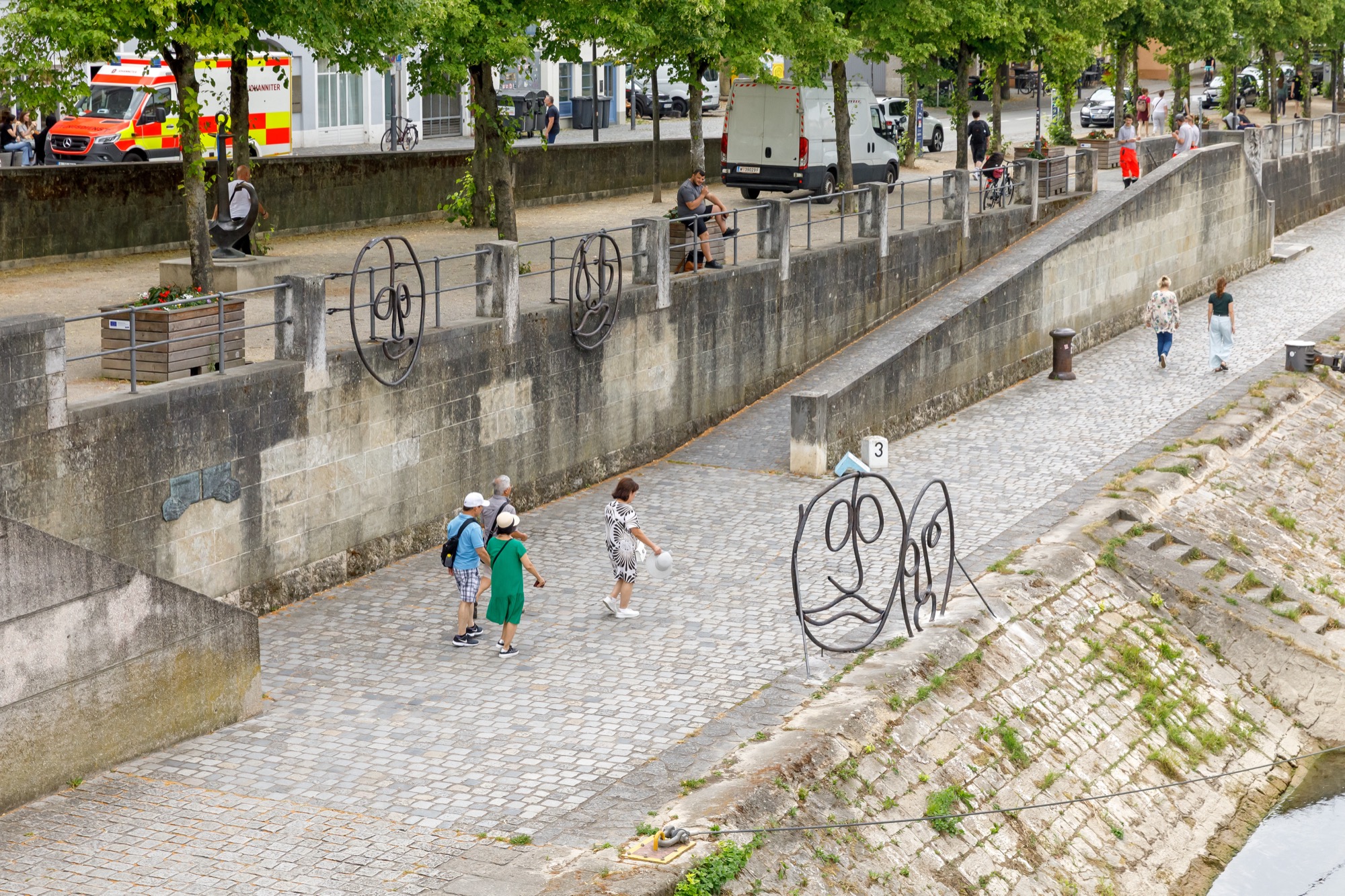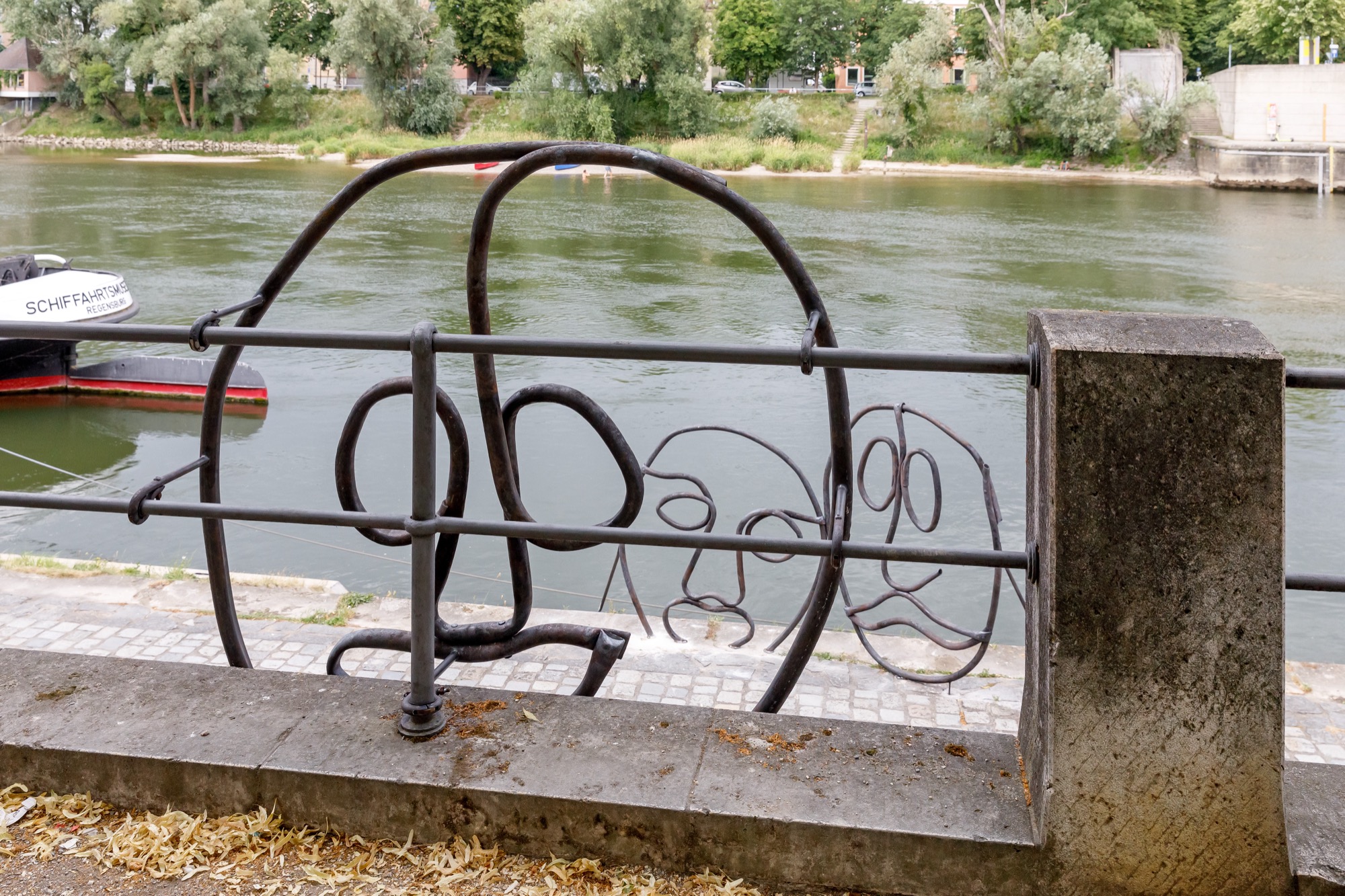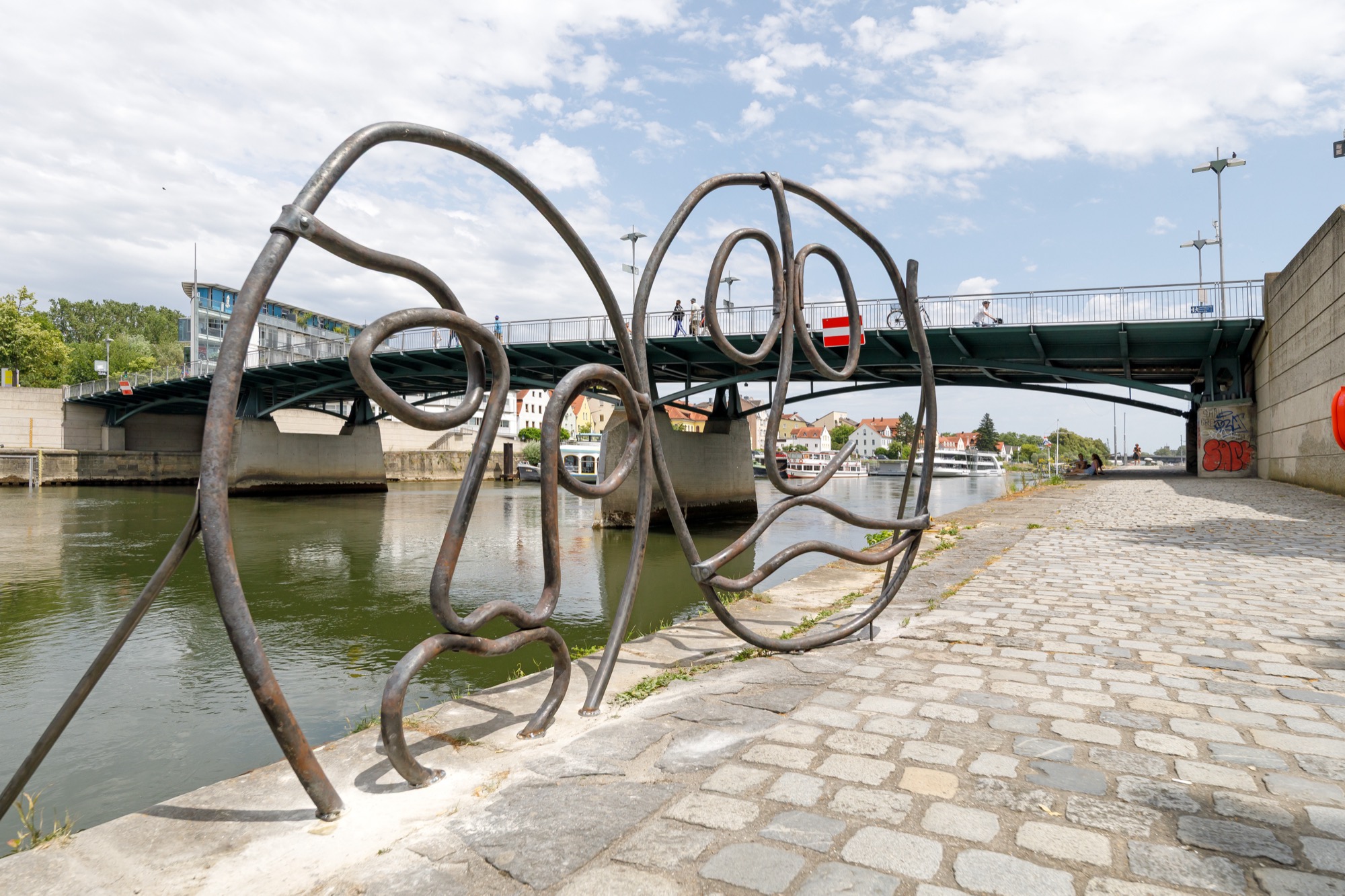2025 ︎ The Wrongs of Back Then
︎Sculptural Intervention ︎1,47 m x 1,90 m / 1,60 m x 1,52 m / 1,50 m x 1,80 m / 1,40 m x 1,60 m︎ Steel ︎ Marc-Aurel-Ufer, Regensburg (D)













The Wrongs of Back Then
Sculptural Intervention, 2025
Marc-Aurel-Ufer, Regensburg (GER)
1,47 m x 1,90 m / 1,60 m x 1,52 m / 1,50 m x 1,80 m / 1,40 m x 1,60 m
Steel
During
my artist-in-residence stay, I came across a trade list during my
research at the World Heritage Visitor Center in Regensburg that
included, alongside goods such as honey, salt, copper, and tin,
»slaves« - that is, enslaved people. I also found a depiction of an
enslaved woman on a Roman-era funerary monument dating to around the
year 200.
I dedicate my work »The Wrongs of Back Then«, consisting of four forged iron sculptures, to the enslaved individuals who were exploited, bought, or sold in Regensburg during the Roman period (1st to 5th century) and the Middle Ages (10th to 12th century).
I dedicate my work »The Wrongs of Back Then«, consisting of four forged iron sculptures, to the enslaved individuals who were exploited, bought, or sold in Regensburg during the Roman period (1st to 5th century) and the Middle Ages (10th to 12th century).
The
ghostly likenesses of human faces resemble hand-drawn sketches. They
appear to rise from the ground, from the historical layers of the
city.
The work thus addresses the history of systematic violence and human exploitation in the context of enslavement, particularly of women and children.
The work thus addresses the history of systematic violence and human exploitation in the context of enslavement, particularly of women and children.
Sources for the international trade in enslaved people in
Regensburg during the Roman period and the Middle Ages:
Dietz, Karlheinz / Fischer, Thomas: Regensburg zur Römerzeit - Von Roms nördlichster Garnison an der Donau zurersten bairischen Hauptstadt, Verlag Friedrich Pustet, 2018, S. 70 ff
Emmerig, Ernst: Slawen in Regensburg, Verhandlungen des Historischen Vereins für Oberpfalz und Regensburg, 138. Bd, 1998, S. 19 ff
Emmerig, Ernst: Regensburg als Markt für Sklaven aus dem Osten, in: Regensburger Almanach 1989, Walhalla und Pretoria Verlag, 1988, S. 27 f
Wanderwitz, Heinrich: Regensburg, ein früh- und hochmittelalterliches Handelszentrum, in: Feistner, Edith (Hrsg.): Das mittelalterliche Regensburg im Zentrum Europas, Forum Mittelalter – Studien, Band 1, Verlagsgruppe Schnell & Steiner, 2005, S. 43 ff
Malcher, Gudrun J.: Die ersten »Regensburgerinnen« – Streiflichter von der Jungsteinzeit bis ins Mittelalter, in: Kätzel, Ute / Schrott, Karin (Hg.): Regensburger Frauenspuren – Eine historische Entdeckungsreise, Verlag Friedrich Pustet, 1995, S. 21 ff
Monumenta Germaniae Historica, Legum Sectio II, Capit. Reg. Franc. Bd. II Nr. 253, S. 249 (Raffelstetter Zollordnung)
Schönfeld, Roland: Regensburg im Fernhandel des Mittelalters, Verhandlungen des Historischen Vereins für Oberpfalz und Regensburg, 113. Bd, 1973, S. 7 ff
The sculptures were forged and installed on site by Bartholomäus Skinner with Bernhard Buff.
Regensburg during the Roman period and the Middle Ages:
Dietz, Karlheinz / Fischer, Thomas: Regensburg zur Römerzeit - Von Roms nördlichster Garnison an der Donau zurersten bairischen Hauptstadt, Verlag Friedrich Pustet, 2018, S. 70 ff
Emmerig, Ernst: Slawen in Regensburg, Verhandlungen des Historischen Vereins für Oberpfalz und Regensburg, 138. Bd, 1998, S. 19 ff
Emmerig, Ernst: Regensburg als Markt für Sklaven aus dem Osten, in: Regensburger Almanach 1989, Walhalla und Pretoria Verlag, 1988, S. 27 f
Wanderwitz, Heinrich: Regensburg, ein früh- und hochmittelalterliches Handelszentrum, in: Feistner, Edith (Hrsg.): Das mittelalterliche Regensburg im Zentrum Europas, Forum Mittelalter – Studien, Band 1, Verlagsgruppe Schnell & Steiner, 2005, S. 43 ff
Malcher, Gudrun J.: Die ersten »Regensburgerinnen« – Streiflichter von der Jungsteinzeit bis ins Mittelalter, in: Kätzel, Ute / Schrott, Karin (Hg.): Regensburger Frauenspuren – Eine historische Entdeckungsreise, Verlag Friedrich Pustet, 1995, S. 21 ff
Monumenta Germaniae Historica, Legum Sectio II, Capit. Reg. Franc. Bd. II Nr. 253, S. 249 (Raffelstetter Zollordnung)
Schönfeld, Roland: Regensburg im Fernhandel des Mittelalters, Verhandlungen des Historischen Vereins für Oberpfalz und Regensburg, 113. Bd, 1973, S. 7 ff
The sculptures were forged and installed on site by Bartholomäus Skinner with Bernhard Buff.
All photos: © Stefan Effenhauser